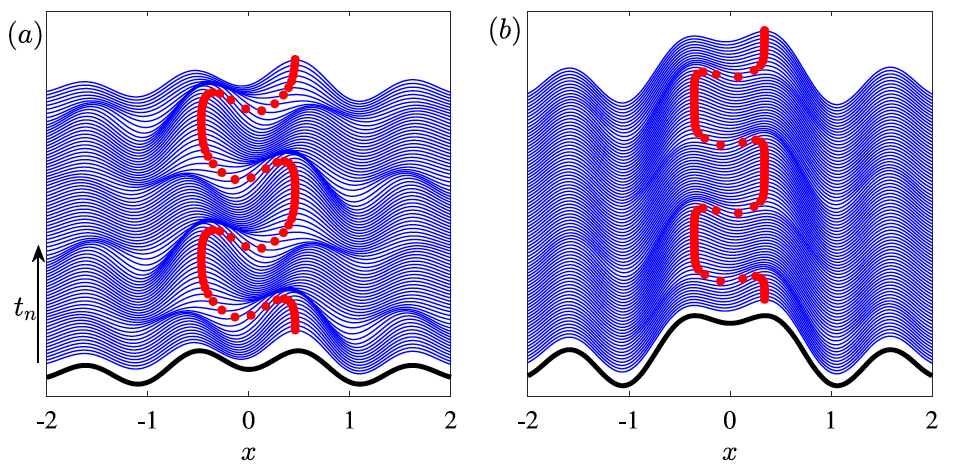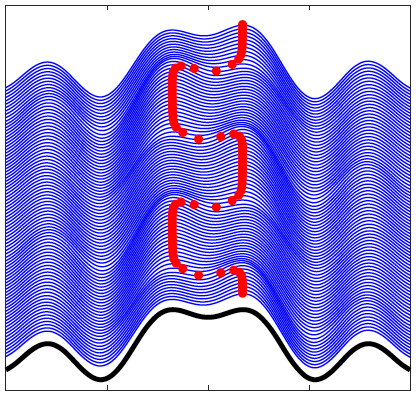
A millimetric droplet may bounce and self-propel on the surface of a vertically vibrating bath, where its horizontal “walking” motion is induced by repeated impacts with its accompanying Faraday wave field. For ergodic long-time dynamics, we derive the relationship between the droplet’s stationary statistical distribution and its mean wave field in a very general setting. We then focus on the case of a droplet subjected to a harmonic potential with its motion confined to a line. By analyzing the system’s periodic states, we reveal a number of dynamical regimes, including those characterized by stationary bouncing droplets trapped by the harmonic potential, periodic quantized oscillations, chaotic motion and wavelike statistics, and periodic wave-trapped droplet motion that may persist even in the absence of a central force. We demonstrate that as the vibrational forcing is increased progressively, the periodic oscillations become chaotic via the Ruelle-Takens-Newhouse route. We rationalize the role of the local pilot-wave structure on the resulting droplet motion, which is akin to a random walk. We characterize the emergence of wavelike statistics influenced by the effective potential that is induced by the mean Faraday wave field.
See paper: Durey, M., Milewski, P.A. and Bush, J.W.M., Chaos (2018).
